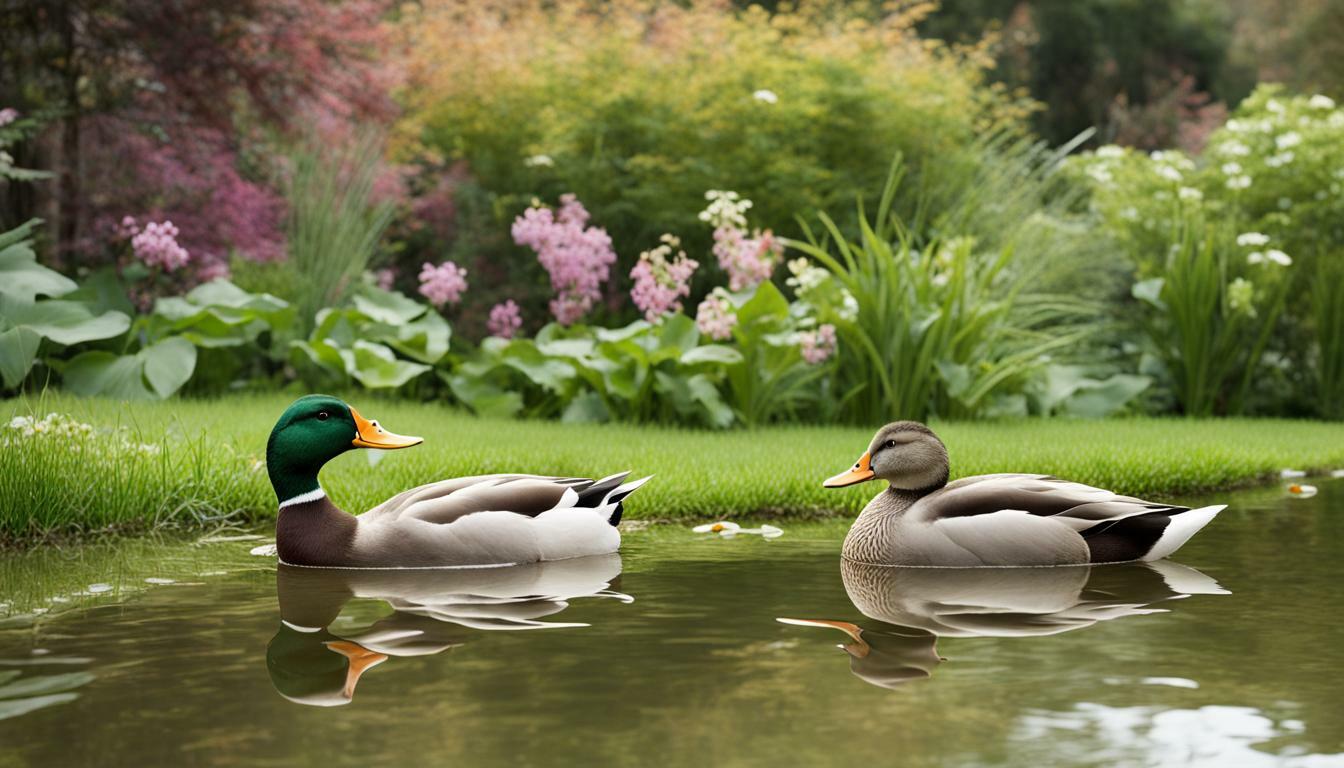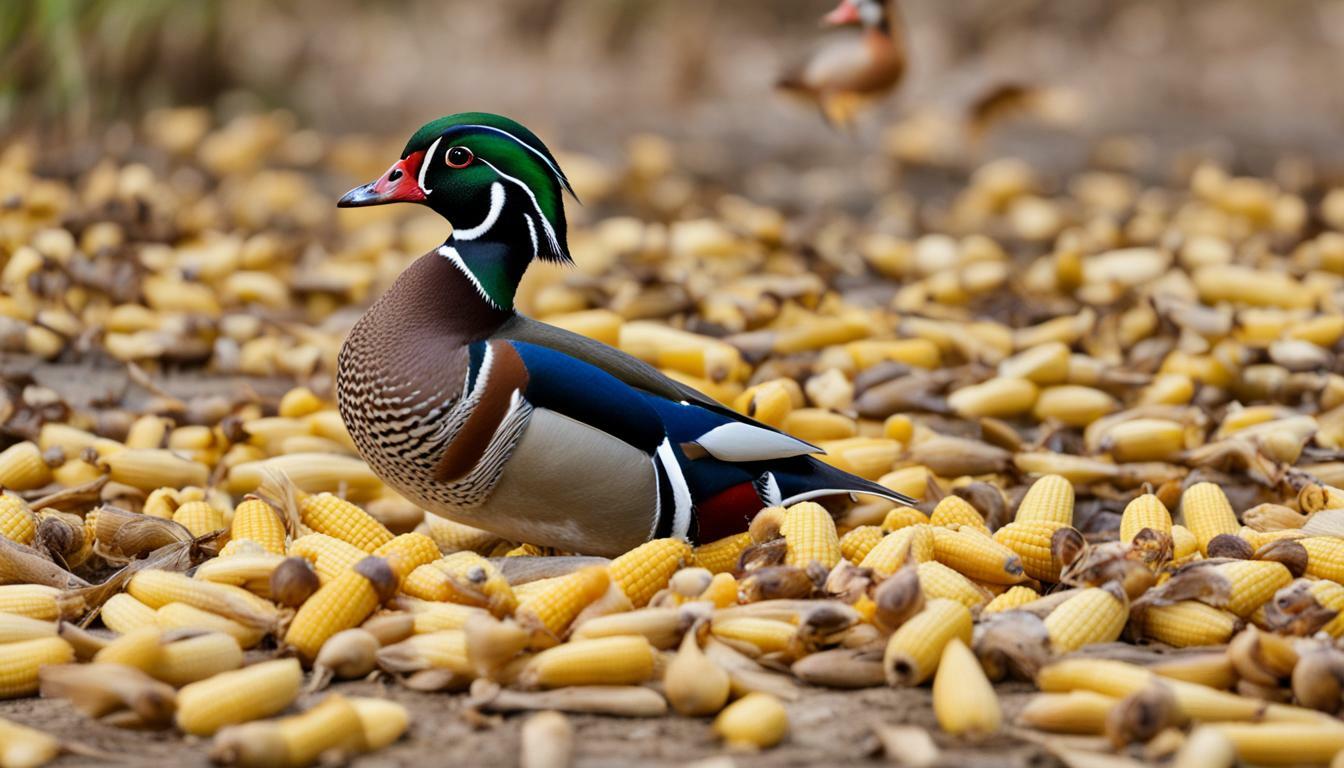Do Pet Ducks Fly Away?

Table of content:
- Do Pet Ducks Fly Away if Not Clipped?
- How Do You Keep Pet Ducks From Flying Away?
- What Should I Do If My Pet Duck Flies Away?
- Do Pet Duck Breeds Not Fly Away?
- Can I Train My Pet Duck Not to Fly Away?
- Is Clipping Wings the Only Way to Stop Pet Ducks Flying Off?
- How Far Will Pet Ducks Fly Away If They Escape?
- Conclusion
For people interested in owning pet ducks, a major deciding factor is whether ducks will simply fly away never to be seen again. It’s a valid concern, as ducks are naturally inclined to migrate and fly south for the winter.
Fortunately, there are ways to minimize the chances your pet ducks will fly off. Certain breeds are less likely to migrate compared to wild ducks. And there are training techniques and physical prevention methods that can restrain flight.
This guide will give duck owners insight into keeping their pet ducks safely contained. We’ll provide tips on breed selection, humane restraint techniques, training, and recapturing escaped ducks. With proper preparation, you can enjoy your duck’s company without constantly worrying about them flying the coop.
Do Pet Ducks Fly Away if Not Clipped?
For ducks to fly away, they need to meet two criteria. One is the desire or instinct to travel and migrate. The other is the physical ability to get airborne and stay there.
Some duck breeds have almost entirely lost the migratory instinct through domestication. So even with intact wings, they tend to stay put in their familiar environment.
However, other pet duck varieties are strong flyers capable of migrating long distances. If they desire to move on, clipping their flight feathers is the best way to keep them grounded. Even tame, human-imprinted ducks can still feel the urge to fly away with their wild brethren during seasonal migrations.
Their success in doing so will depend on their physical flight capabilities. For example, heavier duck breeds have a harder time getting airborne. And clipped wings make it nearly impossible to fly any meaningful distance.
Overall, to stop pet ducks from flying off, the best approach is addressing both the desire and ability to fly. Select calmer breeds, humanely clip flight feathers, and train ducks to become comfortable in their home environment.
How Do You Keep Pet Ducks From Flying Away?
Since ducks are naturally wired to fly long distances, keeping them safely contained takes some extra work. Here are the main techniques used to prevent pet ducks from flying away:
Wing Clipping
Clipping a duck’s flight feathers is the most effective physical way to keep them grounded. It does not harm them and feathers will regrow after molting. Cutting the feathers of one wing prevents the duck from being able to fly up or sustain distance.
Be careful not to trim too much though. The goal is only limiting flight, not completely preventing wing use. Duck’s wings play a role in balance, cooling, and communication.
Shelter and Enclosure Design
Ducks should be kept in a fenced enclosure or shelter with a covered top. This prevents vertical takeoff and provides some barrier to fleeing. Make sure fencing is tall enough that ducks cannot flap their wings and hop over.
You can also clip or file down top beaks to further reduce ability to get lift for flying or jumping over fences. Just be very careful not to cause injury or pain.
Breed Selection
Some duck breeds like Indian Runners, Calls, and Bantam ducks have largely lost their migratory instincts through domestication. Although they can still technically fly, they will generally not wander very far from their home. Opt for these calmer breeds if fly-aways are a big concern.
Heavy duck breeds like Pekins and Aylesburys have a harder time even getting off the ground. Their size and proportions make sustained flight difficult. Again make sure enclosures have covered tops, as they can still flap over fences.
Training
Time and care spent taming pet ducks reinforces staying close to their owners. Well-socialized ducks are less likely to wander off, even without clipped wings. Allow them supervised roaming time so they don’t associate their enclosure only with confinement.
Provide plenty of food, water, shelter, and creature comforts so they become comfortable and familiar with their environment. The more content they are at home, the less likely they are to fly off.
What Should I Do If My Pet Duck Flies Away?
If your pet duck does manage to escape despite preventative measures, act quickly to locate and recover them. Immediately check bodies of water and areas with natural duck foods nearby. Listen for quacking calls and look for any feathers or tracks.
Next, post about the missing duck on community boards and social media. Often people will report sightings of wayward ducks in the neighborhood. Check back frequently on any leads reported online or by people in the area.
Make sure the duck has some form of exterior ID indicating it is a pet if possible. Examples include leg bands, waterproof poultry tags, or clipped markings on wings or tail feathers. This will let people readily identify a domestic duck that needs help.
Keep monitoring online lost and found pet forums in expanding radiuses from where the duck escaped. If migratory season, check areas along typical flyways several miles away as they may follow natural migration urges. Don???t lose hope for several weeks if the duck remains on the loose.
Do Pet Duck Breeds Not Fly Away?
Some pet duck breeds have a minimal flight risk, but no variety is completely unable to fly given the right motivation and physical ability. Here are pet duck types less prone to flying away:
Pekin Ducks – Very large and calm. Have great difficulty getting airborne.
Cayuga Ducks – Mostly do not migrate except in harsh winters. Prefer to stay close to home.
Aylesbury Ducks – Another heavier breed that struggles with sustained flight. Not strong migrants.
Rouen Ducks – Size and docile temperament means minimal desire to fly away.
Saxony Ducks – Light flyers but tend to return home on their own. Not strong migratory instincts.
Swedish Ducks – Shy ducks that generally avoid flying. Prefer walking over migration.
Appleyard Ducks – Large and lumbering breed. Will not stray far and can’t fly for extended periods.
So while these ducks can still technically fly to some degree, their temperaments and body types reduce the risk of them flying off for good. They will generally stay nearby of their own accord without extreme measures to keep them grounded.
Can I Train My Pet Duck Not to Fly Away?
You can certainly train pet ducks not to fly off through dedication and care in their early life. Key aspects of training include:
Socialization – Handling and interacting with ducklings right from hatching gets them comfortable with people. Well-socialized ducks will look to their owners for safety and comfort.
Supervised Freedom – Allowing roaming time around the home and yard gets ducks familiar with their environment. This reduces desire to explore beyond their territory.
Recall Training – Use treats and repetition to teach strong recall commands. Even if they escape due to fright, they will learn to come when called to prevent lost ducks.
Positive Reinforcement – Reward calm behavior in the enclosure and when given freedom. Discourage wandering too far with gentle corrections.
Routine – Establish set feeding times, interactions, and daily routines. Familiarity and consistency keeps ducks content in their home environment.
Escape-proof Environment – Use solid fencing, wing clipping, beak modifications, and covered tops to make successful escape extremely difficult. This minimizes reinforcement of fleeing.
With diligent training and care, even breeds with stronger flying and wandering instincts can become trustworthy. But precautions should still be taken to prevent any chance of accidental escapes.
Is Clipping Wings the Only Way to Stop Pet Ducks Flying Off?
Clipping flight feathers is the most reliable way to physically prevent ducks from sustained flight. However, there are some other options to minimize flying capability if owners are uncomfortable with the clipping process.
1. Breed Selection – Choosing heavy, lazy duck breeds makes getting significant airtime difficult.
2. Topical Sprays – Some no-fly topical sprays change feather pH balance reducing lift. Effects are temporary.
3. Secure Enclosure – Use covered roofing plus tall secure fencing with mesh. Stops vertical takeoff.
4. Beak Filing/Clipping – Carefully filing top beak reduces ability to gain altitude but does not harm duck.
5. Feeding Restriction – Do not severely underfeed. But a leaner duck has more trouble getting airborne.
6. Herbal Supplements – Some calming herbal mixes may reduce desire to migrate or wander
7. Training – Reinforce staying close to home and inside enclosure through rewards and supervision.
So while clipping provides the most flight control, a combination of these options can also minimize risk. But remember to check regulations first, as certain restrictions may apply in some areas. And always ensure your duck’s welfare first when attempting to stop flight.
How Far Will Pet Ducks Fly Away If They Escape?
If pet ducks do become lost after escaping, how far can they actually travel? The distance a duck can fly depends on:
- Breed – Lighter breeds with migratory instincts can fly for miles. Heavy pets may only wander the local area.
- Wing Condition – Clipped or trimmed wings severely reduce flight distance. But intact flight feathers allow longer air travel.
- Weather – Ducks can ride tailwinds during migration that lengthen their flight range. Headwinds shorten it.
- Terrain – Rivers, valleys and coastal areas give ducks lift and thermals and they can fly farther than over land.
- Motivation – Migration urges or panic can make ducks fly surprising distances in short time frames.
While individual cases vary, most escaped heavy, domesticated ducks tend to stay within a mile or two radius when they flee. Their flight is limited to short distances between resting spots on water. Certain conditions may allow them to range further, but they’ll rarely be able to migrate huge distances in one long flight.
Check all nearby ponds and water sources first, then expand the search area mile by mile if your missing duck isn’t quickly located. Enlist neighborhood help and use online lost/found resources to cover ground. Don’t lose hope, as ducks can survive quite well in urban and suburban areas on their own.
Conclusion
Pet ducks do have a natural tendency to want to fly away at times. But with the right breeds, restraint techniques and training, they can become trusting companions that stick close to home.
Always balance safety precautions with humane care when managing flight risk. Prioritize creating a comfortable home environment so ducks become attached and don’t want to leave. Monitor for signs of misery or injury with any restraint methods attempted.
While even the most well-trained ducks could still escape due to unforeseen events, diligent precautions go a long way. Make sure you have a way to identify your pet and be prepared to conduct a search immediately if they go missing.
With a little insight into duck behavior and flight dynamics, owners can enjoy their unique pets without constantly worrying about arriving home to find them gone. Just take reasonable steps tailored to your breed and situation to minimize wandering. The result will be happy ducks and relaxed owners.
Welcome. I’m Adreena Shanum, the proud owner of this website, and I am incredibly passionate about animals, especially poultry. I founded adreenapets.com as a labor of love, stemming from my desire to share my knowledge and experiences with poultry enthusiasts worldwide.




